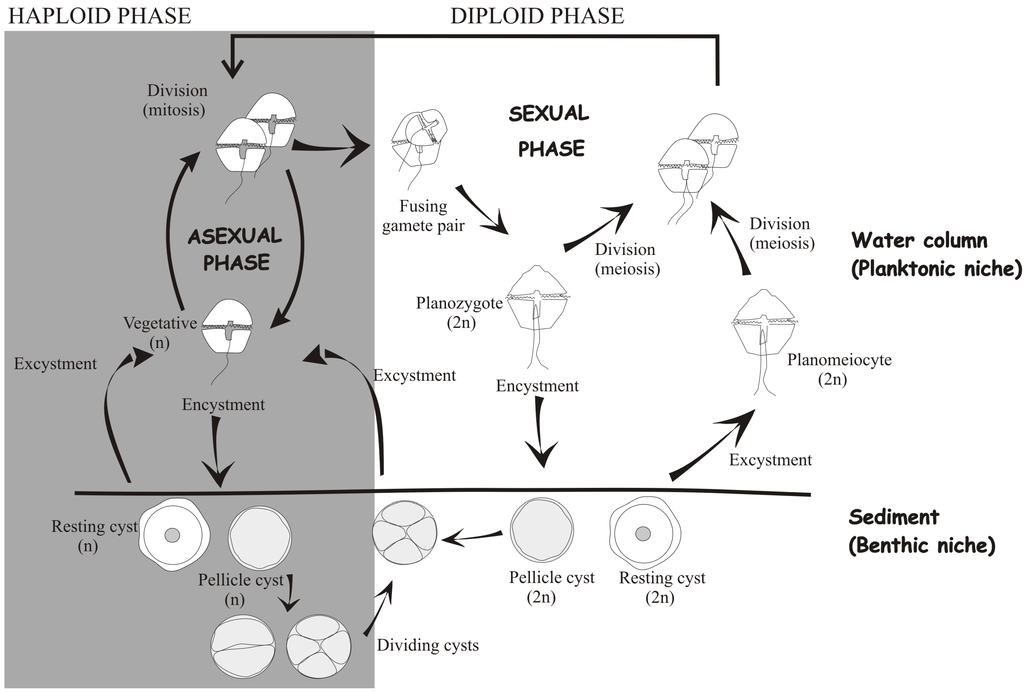.
.
For those that didn't know already.
The life cycle of dinoflagellates, including all possible described transitions.
.

Pellicle cysts are temporary.
Resting cysts are long term.
Diploid cells contain two complete sets (2n) of chromosomes.
Haploid cells have half the number of chromosomes (n) as diploid.
Meiosis is a specialized type of cell division which reduces the chromosome number by half.
----
Since cysts are dinos defense against hostile environment they are my pick for this weekends reading on the subject.
Below are some interesting points from what I read.
Indeed, during dinoflagellate evolution the need to adapt to fluctuating environments and/or to seasonality is thought to have driven the development of this life cycle stage. Most protists form dormant cysts in order to withstand starvation and UV damage. However, there are enormous differences in the main phenotypic, physiological and resistance properties of each dinoflagellate species cysts.
-
The data from those studies suggest that P and N levels determine the type of cyst produced during reproduction: pellicle cysts under phosphate-limited conditions and resting cysts during nitrate limitation.
-
Among all environmental factors, nutrient limitation and changes in temperature are the most common triggers for resting cyst formation.
-
The same study also suggested that dinoflagellate cysts are able to detect chemical signals emitted by predators.
-
The survival of pellicle cysts after passage through the digestive tract of Crassostrea gigas has been reported.
-
Resting Cyst Formation as a Defense against Parasitic Attack.
-
Similarly, pellicle cyst formation by the Alexandrium catenella in response to phosphorous limitation was reported.
Here is the whole artice.
http://www.mdpi.com/2076-2607/2/1/11/htm